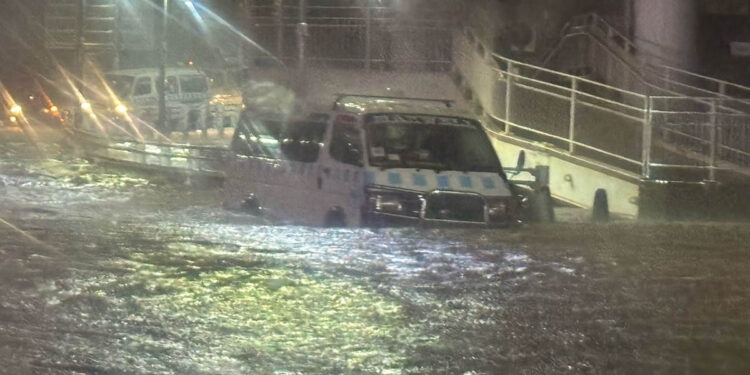Floods in Kampala are the usual conversation every time we usher in a new rain season. This one began earlier this month, but it intensified after a heavy downpour on Wednesday, 26 March 2025, and by the close of business, Luke Owoyesigire, the Deputy Police Spokesperson for Kampala Metropolitan, had confirmed that 7 lives had been lost due to the floods.
All the roads leading into the city had overwhelming traffic jam and the majority of the people arrived late to their places of work. If you convert the time spent in traffic into monetary value, a lot of money was lost, even more, the newly commissioned multi-million Kampala Fly Over also flooded.
The responsibility of the floods in Kampala is shared among a number of factors, like the general population, the Central government, the local government, and natural factors. All these have a share of the blame for the rampant flood problem, which seems to have no immediate solution.
Below are some of the factors leading to flooding in Kampala:
Urbanization: Kampala is a lowland, and many of its suburbs were pure wetlands, which have been destroyed due to urbanization. Now this is a real threat because the wetlands are meant to absorb the majority of the runoff water
Increasing water-resistant surfaces: open Land surfaces contribute to absorption of water, but because it is reducing and tarmac(asphalt), concrete are increasing instead, leading to mass collection of water, resulting in floods in case of heavy downpours.
Climate change: Uganda’s Meteorological Department has already announced that we shall have heavy rains attributed to storms in the Indian Ocean. Changes lead to intense rains, causing floods.
Poor planning: Kampala is one of the cities with very poor Land use and planning, with no clear drainage systems, no flood control systems, and poor infrastructure. With these major challenges, there are high chances of floods.
However, all hope is not lost because this problem of floods in Kampala can be curbed for people to live happily in their city.
Amongst the first solutions is the construction of effective drainage systems. Thanks to the late Ssebana Kizito, who oversaw the construction of the Nakivubo drainage channel, which plays a major role in channeling most of the water from the city center.
Restoration and preservation of wetlands. These help a lot in absorbing excess water, and this is what the National Environmental Management Authority has started with by restoring some of the wetlands like Lubigi and areas near the Munyonyo Express wetlands.
Mass sensitization of the masses. The Authorities must ensure that information trickles down to the people about their responsibility in curbing the floods, by not throwing waste in the drainage channels, not settling in wetlands, and not destroying the wetlands.
In conclusion, the floods can be dealt with in Kampala if all stakeholders collaborate towards that cause instead of playing blame games like many politicians are doing on their podiums.
Do you have a story in your community or an opinion to share with us: Email us at editorial@watchdoguganda.com













